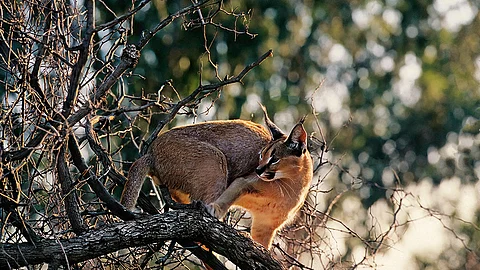
- Destinations
- Experiences
- Stay
- What's new
- Celebrating People
- Responsible Tourism
- CampaignsCampaigns
- Subscribe
- Buy Now

In India, icons matter. This is both an advantage and a disadvantage. During my two tenures as Director of Wildlife Preservation of India in the 1970s and 1980s, I leveraged the charisma of the tiger and the snow leopard to protect their diverse habitats and all other wildlife within them, under the projects named after these species. Other iconic and endangered species—the gharial, Gangetic dolphin, blackbuck, Nilgiri tahr, lesser florican, great Indian bustard, Tibetan gazelle, and others—were also used to establish specific protected areas.
By protecting these species and their habitats, we aimed to safeguard all other creatures that shared these spaces. Sadly, many of our compatriots have yet to grasp a crucial truth: we can have wilderness without wild animals, but we cannot have wild animals without wilderness. We can only ogle at them in safari parks and zoos, which our governments are currently encouraging.
In the past, hunters in both British and princely India killed a staggering number of carnivores and other animals. However, even after the Independence, there were still more tigers, leopards, and other animals than there are now, over half a century after the Wildlife (Protection) Act of 1972 and Project Tiger of 1973. And that was because, despite the slaughter of tigers and others in pre-Independence India, the habitats, their ecological security, and the prey base had remained secure and safe.
In early 1973, Project Tiger was launched with nine Tiger Reserves. I served as the member secretary of the Task Force when the project began. The selection criteria were not just based on the number of tigers present, but also the scope for improvement the site had under the project, and secondly, the number and status of endangered species it held, which could be saved under its banner. In Assam, we did not select Kaziranga, which always had the most tigers but was already protected due to the rhino. Instead, we chose Manas, which held the largest number of endangered species under the Wildlife (Protection) Act of 1972 and had the greatest potential for improvement. Under Project Tiger's protection, the tiger population increased, and the animals became bolder and more diurnal, making them far more visible.
An insidious outcome of this fixation on seeing tigers and lions is the creation of safari parks adjacent to protected areas
The rise of wildlife resorts and the advent of social media fuelled the exponential growth of wildlife tourism, which became increasingly focused on megafauna, particularly tigers and lions. However, park visitation no longer implied a communion with nature or the opportunity to view a diverse range of wildlife. Instead, it became about spotting specific large mammals, especially carnivores. People only visited parks where these animals were easily visible, neglecting others richer in biodiversity. The sole measure of a successful wildlife visit became a "sighting," and nothing else seemed to matter. A conservation lobby capitalised on this public opinion, promoting the misleading idea that "if you save the tiger, you've saved everything." But does the tiger live on snow-capped mountains, arid grasslands, rivers, lakes, seas, or oceanic islands?
Governments have focussed primarily on species and parks that attract public notice. Unfortunately, our most endangered species—some with populations of fewer than 100—are found in non-mega-mammal protected areas. Species like the great Indian bustard, Tibetan gazelle, and pangolin species are not given the attention they deserve. Our most threatened large mammal, the elegant caracal, exists in Ranthambhore, yet it remains a species without a "godfather." It is not a target for revival in the wild within the Ranthambhore National Park; only the tiger is.
An insidious outcome of this fixation on seeing tigers and lions is the creation of safari parks adjacent to protected areas. Before 2013, such parks were banned, even in the buffer zones of these areas. Large sums of public money and resources, which should have been used to protect our parks and sanctuaries, are now diverted to zoos and safaris to feed this obsession. If seeing the animal is the priority, why spend time and money travelling to distant parks when you can simply visit the nearest zoo? In any case, the animal you see there is merely a conditioned caricature of the real thing, harried and hounded by a mob of selfie-seeking visitors. One forest officer described this mania as a bimari (sickness). I prefer to call it MMM—Mega Mammal Myopia.
Dr M.K. Ranjitsinh is an author and authority on wildlife and nature conservation in India
